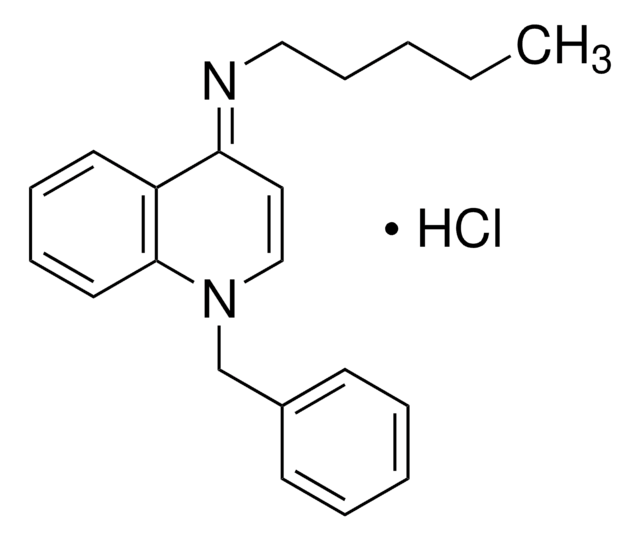U3885
UK-78282 monohydrochloride
≥98% (HPLC)
Synonym(s):
4-[(Diphenylmethoxy)methyl]-1-[3-(4-methoxyphenyl)propyl]-piperidine monohydrochloride
About This Item
Recommended Products
Assay
≥98% (HPLC)
form
solid
storage condition
desiccated
color
white to off-white
solubility
DMSO: >10 mg/mL
shipped in
wet ice
storage temp.
−20°C
SMILES string
Cl.COc1ccc(CCCN2CCC(CC2)COC(c3ccccc3)c4ccccc4)cc1
InChI
1S/C29H35NO2.ClH/c1-31-28-16-14-24(15-17-28)9-8-20-30-21-18-25(19-22-30)23-32-29(26-10-4-2-5-11-26)27-12-6-3-7-13-27;/h2-7,10-17,25,29H,8-9,18-23H2,1H3;1H
InChI key
ZZSQARULZYQMIG-UHFFFAOYSA-N
Biochem/physiol Actions
Features and Benefits
Preparation Note
Signal Word
Warning
Hazard Statements
Precautionary Statements
Hazard Classifications
Aquatic Acute 1 - Eye Irrit. 2
Storage Class Code
11 - Combustible Solids
WGK
WGK 3
Flash Point(F)
Not applicable
Flash Point(C)
Not applicable
Certificates of Analysis (COA)
Search for Certificates of Analysis (COA) by entering the products Lot/Batch Number. Lot and Batch Numbers can be found on a product’s label following the words ‘Lot’ or ‘Batch’.
Already Own This Product?
Find documentation for the products that you have recently purchased in the Document Library.
Articles
We offer many products related to potassium channels for your research needs.
Our team of scientists has experience in all areas of research including Life Science, Material Science, Chemical Synthesis, Chromatography, Analytical and many others.
Contact Technical Service






![(R)-α,α-Bis[3,5-bis(trifluoromethyl)phenyl]-2-pyrrolidinemethanol trimethylsilyl ether technical grade](/deepweb/assets/sigmaaldrich/product/structures/275/930/055f0504-bc37-431a-b746-95d9fc72ba2d/640/055f0504-bc37-431a-b746-95d9fc72ba2d.png)


